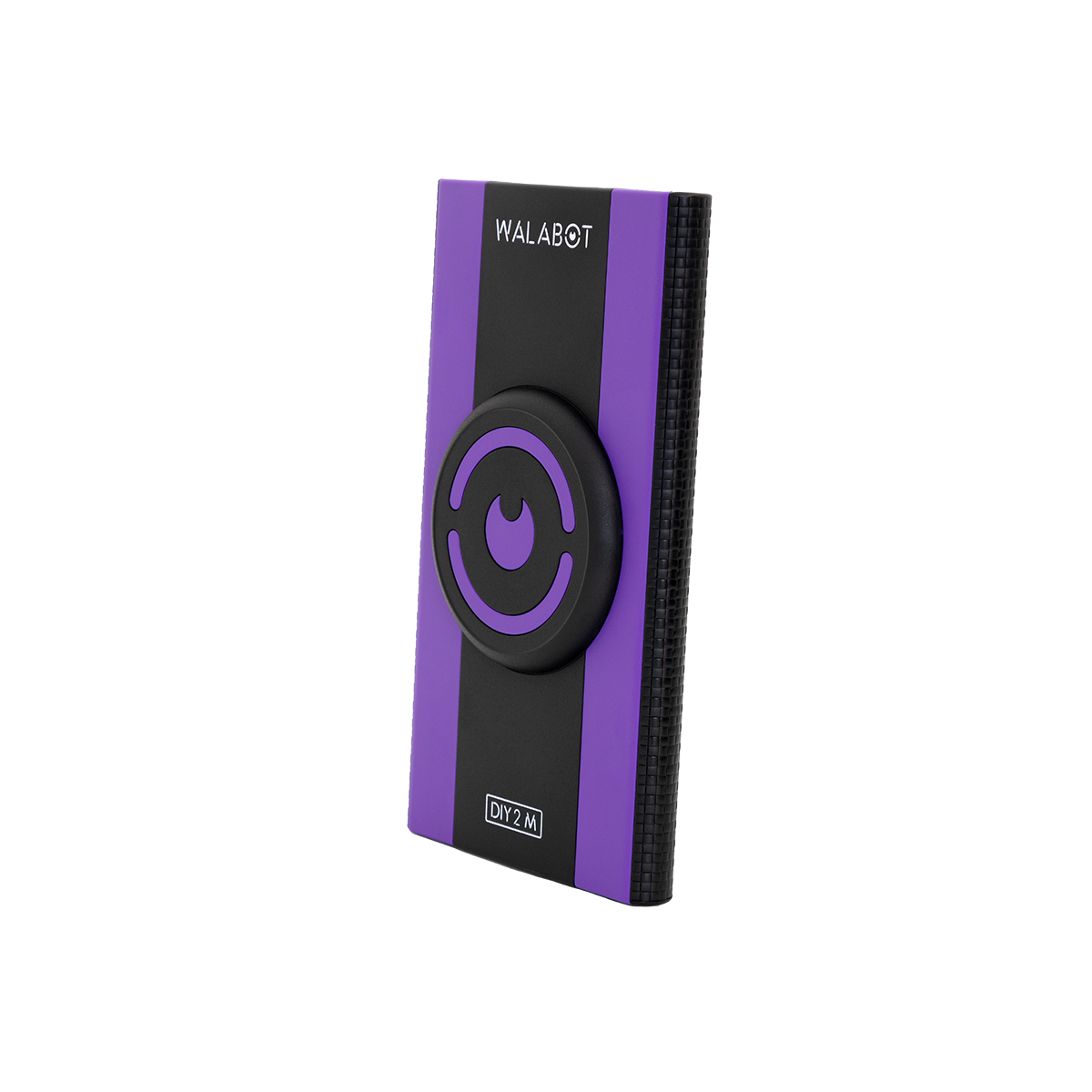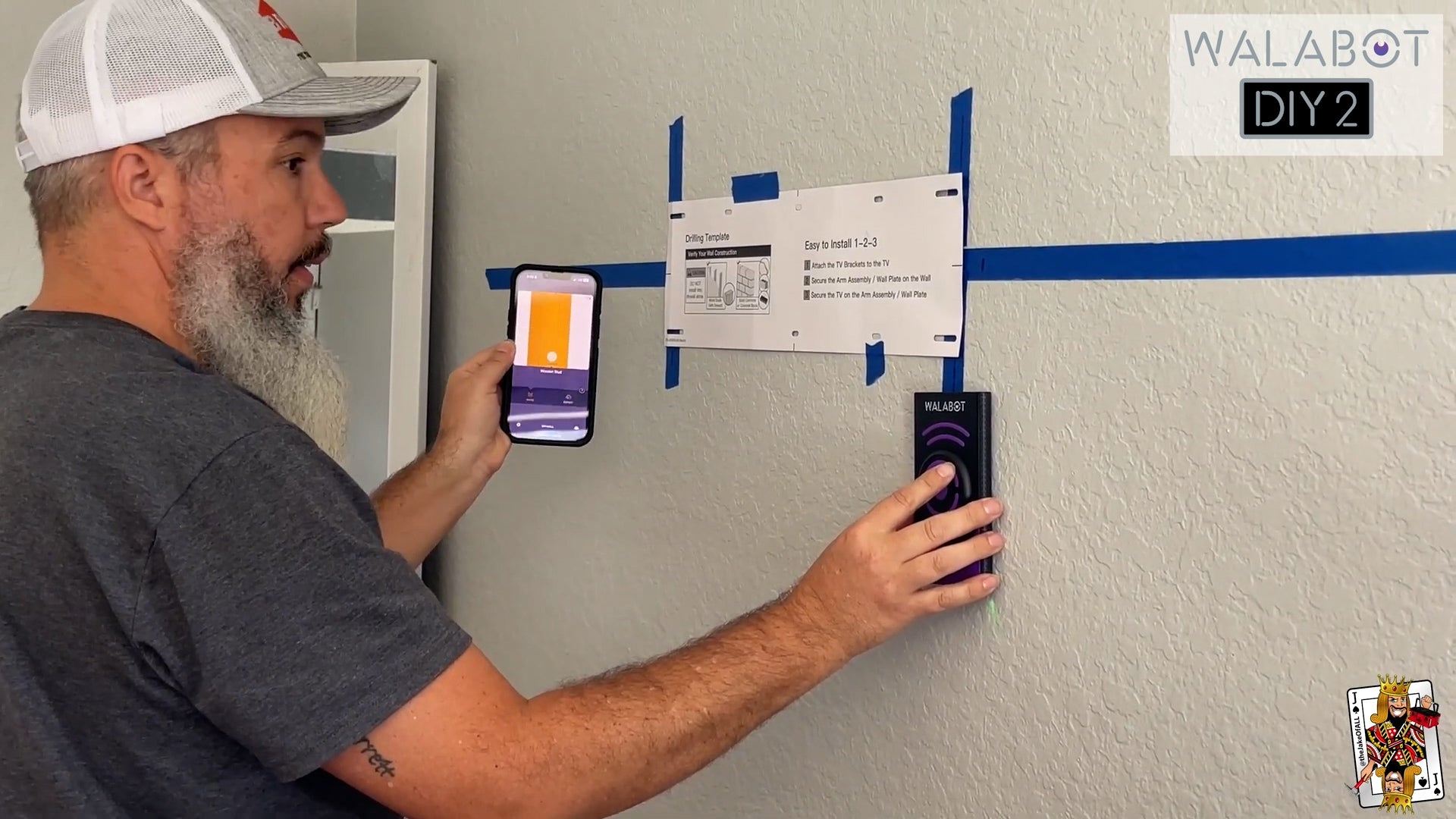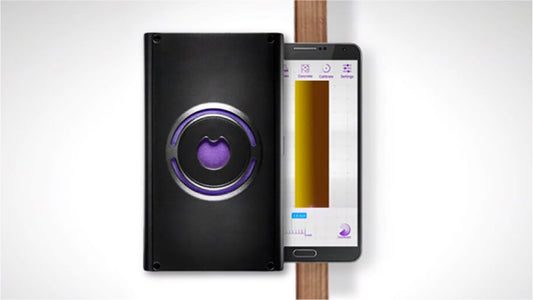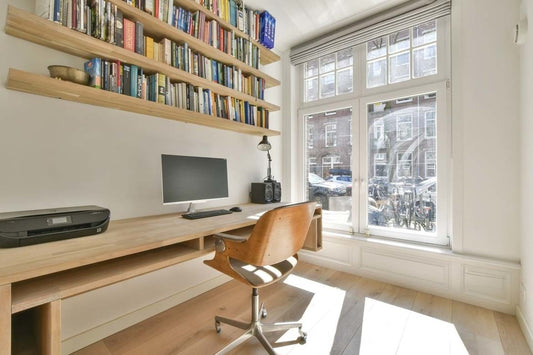If you're wondering how to mount a TV on drywall, it's important that you pick the right mounting bracket.
There are three main types of TV wall mounts to choose from, and this article will walk you through the pros and cons of each.
First, you need to check that the wall mount is going to fit your television. Most wall mounts are built according to VESA (Video Electronics Standards Association) standards. If you look at the wall mount specifications, it will show you the different hole patterns – VESA hole pattern sizes - that it will fit. Just look at the specs for your TV to find out if they match the wall mount that you're looking to install.

Static mounts
The first type of TV mount is a standard static or stationary wall mount. As the name suggests, it does not move.
It consists of a rail system that connects to the back of the TV, fixed to studs in your wall. You just put the top part on and lock the bottom part in. These attach to the back of your television and keep it in place.
The pros for this type of wall mount are that it is a solid construction, and it will hold your TV securely to the wall. Additionally, it will keep your TV very flush to the wall.
On the downside, it does not move. So, if you need to tilt your television to get the ideal viewing angle, you are not going to be able to do that with this mount.

Tilting mounts
The second type of mount to consider is a tilting wall mount. This is almost identical to the static stationary wall mount with one exception.
The rail system has a tilting mechanism built into it that you can adjust and tilt to your desired angle.
It uses the exact same wall plate system as the static mount, and hooks on the top the same way. It also locks in at the bottom the same way.
It doesn’t swivel, but if you need to tilt your television forward or backward to reduce glare from lighting or to provide a better viewing angle, you can adjust it however you need.
The pros with this tilting mount are the same as the static standard mount, plus the fact that you can tilt.
Full motion mounts
A full motion wall mount is not only a plate on the wall that you can put rails on, but also a fully integrated system.
It does several things that static and tilt mounts can’t.
The full motion mount pulls away from the wall so you can get distance between the TV and the wall. If there’s an obstruction to overcome, this is a great option.
It swivels left and right, with all sorts of combinations. It also tilts. So, no matter what position you're in, you can tilt the front of the plate and get any angle you want, whatever position you are in.
The beauty of this wall mount is it has enormous flexibility and it's not that much more expensive than the other two options.
There are two main types of full motion mount, one with a plate that you mount up against the wall and one with a center design option which is useful for mounting a TV in a corner.
This second type mounts on one just stud and provides the flexibility to move the TV around so that it looks like it's floating in the corner. Even if you move it all the way to the side, you're not going to see the big plate sticking out from the side of the TV, because it is mounted in one single spot.
Mounting your TV
Now you’re ready to learn how to mount a TV on drywall. There’s a simple four-step process that will help you get the job right first time.
Step 1: Choose your location
First, figure out exactly where you want to mount the TV: the height and position on your wall.
The most important thing to consider is your normal eye level: whether it's a standing viewpoint or a sitting viewpoint.
If you’re installing a TV in your bedroom, decide whether you’re likely to be watching when lying down or sitting up – this will help you determine the exact height you need.
Step 2: Find your studs
The second step is probably the most critical in this process: locating the studs inside the wall.
Some people say you can use drywall anchors or other wall anchors to hang TV wall mounts. Please do not do this. You need something that can hold the weight of both the mount and your TV, especially if you're going to be using a full motion wall mount bracket. That's going to put significant pressure on the mount points, pulling them away from the wall. For this, there’s really no substitute for studs.

To find your studs, the best tool to use is the Walabot DIY 2. It uses radar to penetrate drywall, letting you “see” up to 4 inches deep. It shows you pipes and wires too, to minimize the biggest risk you face when drilling. And it also reveals the exact center of a wood or metal stud – the strongest point for installing your TV mount. You don’t want to drill into the edge of a stud. That could result in an epic fail.
Most TV wall mounts will come with a template that you can tape to the wall. This is a great tool for getting the holes in the right spots, matching them up against the marks you’ve made using your Walabot.
When you put the template on the wall, use a spirit level to make sure that it's perfectly horizontal.
The template will also tell you which size drill bit to use. Pre-drill your holes before you put the bracket on the wall. It’s best to drill right through the holes in the template, so there’s no chance of error.
Step 3: Install the bracket
Now you’re ready to fix the mounting bracket to the wall. You’ll be driving lag bolts into the wall to hold the mounting plate up against it, and here you have two options: an impact driver and/or a socket wrench.
You can do the whole job with a socket wrench, but the impact driver makes it easier to get the bolts into the wall, while finishing with the socket wrench delivers just the right amount of pressure, eliminating the risk of over-tightening the bolt with the impact driver. Just make sure you keep your bracket level when you install it.
Four lag bolts into two studs are all you need to get it done, but once the mount is installed you have to test it.
If you're installing a standard static wall mount or a tilt mount and you have only the rail system, pull on the top of the rail system to make sure it’s secure. If you have a full motion wall mount, pull it out and down to make sure it's going to hold some weight and that it's embedded nice and tight.
Step 4: Mount your TV
The final stage is to get the rail system mounted to the back of the TV and then mount the TV on the wall.
The hooked point of your mounting bracket needs to be aligned with the top of the TV, with the securing screw lined up with the bottom, although many mounts have a latch that moves up and down instead.
Your mounting kit comes with various screws, spacers, and washers. Make sure you pick out the right screws by testing them in the holes in the back of your TV.
The spacers are a different story. If your holes are a little recessed, you want to find the spacer that fits inside the dimple in the plastic. That will give you a nice tight fit up against the bottom of the rail.
Likewise, you might have some that are sticking out a little and you can use the spacers to keep the distance between the rails and the TV the same on the top and the bottom, ensuring a nice flush mount. Because every TV is different, you're going to have to play around with this to see what works.
Now you’re ready to pick up your TV and put it on the mount. Screw in the securing screws at the bottom of the plate – or flip the latch.
And finally, if you have a tilt or full motion mount, experiment with the mechanism until you find the perfect angle.
That’s it! Check out the videos above if you want to see any of these steps for real. Happy DIYing!







